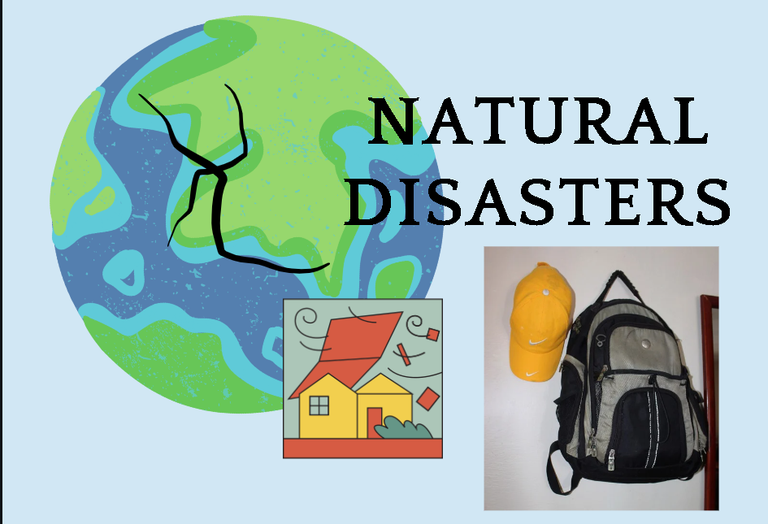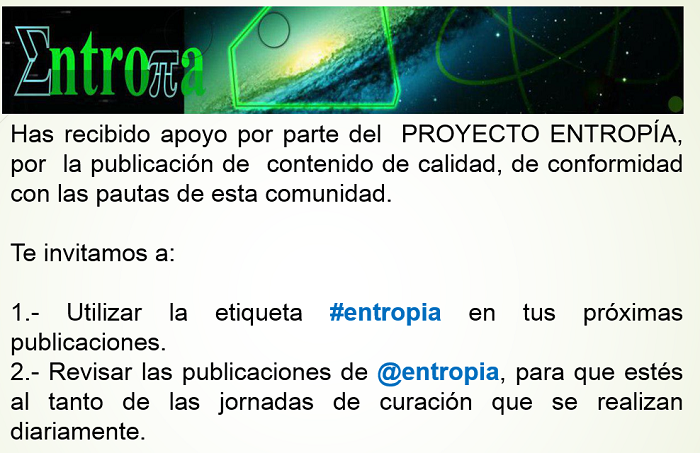Natural disasters give no warning when they will occur. So how can you prepare for them? Well, by taking some simple but life-saving precautions. There are plenty of suggestions on the internet. But today I will show you the ones I have started to use and the ones I have yet to use. Please join me.

First of all, I think that preparing for a possible response to a disaster does not mean being pessimistic about the future. It is rather to try to be realistic. I think it can aggravate the situation if we have the impression that it will not happen. Improvising or making quick decisions at a time like this can be disastrous. It is better to be more prepared and improvise less.
For example, we should know where the least risky spots are both inside the house and in the neighbourhood. In addition, it is always good for the whole family to have an evacuation plan and also a meeting point where they can meet in the event of such an event, bearing in mind that sometimes power and telecommunication services can fail.
For years I have been receiving education on preparing an emergency bag for each member of the family. To show its effectiveness, we have seen videos of people who have put it into practice, and although several have lost all their belongings, what they did not lose was their lives because of their quick response. That motivates me. Here is what my bag contains so far.

Medicines and first aid. I have bought some medicines in pill form. I think it's a good idea to have medicines such as anti-flu, painkillers, antibiotics, allergy medicine, etc. Often after a devastating flood or earthquake some diseases are spread because of poor water quality, debris running through the streets and even bodies starting to decompose around the area. So be prepared.
Also, if someone has been injured, we can help them. For this, it is important to have things like alcohol, hydrogen peroxide, cotton wool, gauze, gloves, tweezers, scissors, etc. I still need to buy some of them, but I already have some. It is important that some of them are stored waterproof.

Personal items. In the picture you can see a face mask and some new toothbrushes. These are things we would need in case we lose everything at home. Besides, it doesn't make sense to return home just for our toothbrush and deodorant if it means risking our lives.
In this line I plan to add a mask, antibacterial soap, a towel, toilet paper, a change of clothes. I have seen how these basic things can be very useful after a disaster. It is not easy to obtain them and it also seeks to keep our hygiene condition from deteriorating so much, and to protect us to some extent.

Non-perishable food. Recently we were given two canned bologna with an expiry date of 2027. I immediately proposed to the family not to consume it, but to keep it in our emergency bags. We agreed, so I put one can in my bag and the other in my wife's bag. I like the fact that it has the necessary features at the top to open it easily. If it didn't, a can opener would have to be added to the bag.
Non-perishable food is very important, because although we can hope that after a while some help from citizens and organisations will arrive, if this help is delayed due to lack of road access or persistent adverse conditions, we can sustain ourselves for a while, especially our vulnerable children. We may not get everything we want, or like to consume, in this presentation. But it doesn't matter! What we want is to consume something that gives us energy to subsist and move. This is something we want to keep adding to the emergency bag.
Planning is important in this matter. In my case, we have discussed it as a family and little by little we are adding things to our bags. But, apart from planning, the other factor to take into account is to resist the urge to unpack what we have put in there. Sometimes, there may be a financial crunch and we want to use the can of food in the bag, or perhaps a medicine with the promise of replenishing it later. Sometimes this doesn't work out, as we don't replenish it. For example, my mother ‘borrowed’ the alcohol from my purse two months ago to help a neighbour, and I still haven't got it back. I am resigned to the fact that I have to buy a new one myself.

We still have a long way to go to integrate, but I'm optimistic that I'll be able to do it. The best thing is that we will never need to use it, but if we have to use it, we have it! I will have the satisfaction of having made good use of time and resources for that unforeseen event. What do you think of the ideas I mentioned? Do you do something similar in your case? See you in the comments. Thanks for making it this far - see you next time!



Los desastres naturales no avisan cuando ocurrirán. Entonces, ¿cómo es posible prepararse para ellos? Pues, tomando algunas previsiones sencillas pero que pueden salvarnos la vida. En internet hay una infinidad de sugerencias. Pero hoy les mostraré las que empecé a emplear y las que aún me faltan. Por favor, acompáñame.

Antes que nada, pienso que prepararse para una posible respuesta a un desastre no quiere decir que seamos pesimistas ante el futuro. Es más bien procurar ser realistas. Creo que se puede agravar la situación si tenemos la impresión de que eso no pasará. Improvisar o tomar decisiones rápidas en un momento así puede resultar ser nefasto. Es mejor estar más preparado e improvisar menos.
Por ejemplo, deberíamos conocer cuáles son los puntos de menos riesgos tanto dentro de la casa como en el vecindario. Además, siempre viene bien que la familia completa tenga un plan de evacuación y también un punto de encuentro dónde poder verse ante un evento así, teniendo en cuenta de que a veces la corriente eléctrica y servicio de telecomunicaciones pueden fallar.
Desde hace años he venido recibiendo educación sobre preparar un bolso de emergencia para cada miembro de la familia. Para mostrar su efectividad, hemos visto videos de personas que lo han puesto en práctica, y aunque varios han perdido todas sus pertenencias, lo que no perdieron fue la vida por su rápida respuesta. Eso me motiva. Aquí les muestro qué contiene mi bolso hasta ahora.

Medicinas y primeros auxilios. He comprado algunas medicinas en pastillas. Creo que es buena idea tener medicamentos como antigripales, analgésicos, antibióticos, antialérgicos, etc. Con frecuencia, luego de una inundación o terremoto devastador suelen propagarse algunas enfermedades por la baja calidad del agua, los desechos que corren por las calles y hasta cuerpos que empiezan a descomponerse al rededor. Por eso hay que estar preparado.
También, si alguien sufrió alguna herida podemos auxiliarlo. Para ello, es importante tener cosas como alcohol, agua oxigenada, algodón, gasas, guantes, pinza, tijera, etc. Aún me falta con comprar varias de ellas, pero tengo ya algunas. Es importante que algunas de ellas estén guardados de forma impermeable.

Artículos personales. En la fotografía pueden ver una máscara facial y unos cepillos de dientes nuevos. Son cosas que necesitaríamos en caso de perder todo en casa. Además, no es lógico devolverse a casa sólo por nuestro cepillo de dientes y desodorante si eso implica arriesgar nuestra vida.
En éste renglón pienso agregar tapabocas, jabón antibacterial, una toalla, papel higiénico, una muda de ropa. He visto cómo éstas cosas básicas pueden ser de mucha utilidad luego de un desastre. No es sencillo obtenerlos y además busca que nuestra condición de higiene no desmejore tanto, y protegernos hasta cierta medida.

Alimentos no perecederos. Recientemente nos dieron dos mortadelas en lata con fecha de vencimiento del 2027. En seguida le propuse a la familia no consumirla, sino guardarla en nuestros bolsos de emergencia. Estuvimos de acuerdo, así que coloqué una lata en mi bolso y la otra en el bolso de mi esposa. Me gusta de que tiene en la parte superior lo necesario para abrirlo fácilmente. Si no lo tuviera, habría que agregar al bolso un abrelatas.
Los alimentos no perecederos son muy importante, porque aunque se puede esperar que al cabo de un tiempo llegue algún tipo de ayuda por parte de ciudadanos y organizaciones, si esta ayuda tardara por no haber acceso vial o persistir las condiciones adversas, podemos sustentarnos durante un tiempo, especialmente a nuestros vulnerables niños. Tal vez no se consiga en ésta presentación todo lo que deseamos, o nos gusta consumir. Pero, ¡no importa! Lo que queremos es consumir algo que nos de energías para subsistir y movernos. Esto es algo que queremos seguir agregando al bolso de emergencia.
La planificación es importante para éste asunto. En mi caso, lo hemos conversado en familia y poco a poco vamos agregando cosas a nuestros bolsos. Pero, aparte de la planificación, el otro factor a tomar en cuenta es resistir el impulso de descompletar lo que hemos puesto allí. A veces, puede que haya una estrechez económica y queramos usar la lata de alimento del bolso, o quizás una medicina con la promesa de reponerla luego. A veces, ésto no sale bien, puesto que no lo reponemos. Por ejemplo, mi madre hace dos meses que me pidió "prestado" el alcohol de mi bolso para ayudar a un vecino, y aún no me lo ha devuelto. Ya estoy resignado a que tengo que comprar uno nuevo yo.

Aún nos falta mucho por integrar, pero soy optimista de que podré lograrlo. Lo mejor es que nunca nos haga falta usarlo, pero si tocara usarlo, ¡lo tenemos! Tendré la satisfacción de haber aprovechado bien el tiempo y los recursos para ese suceso imprevisto. ¿Qué opinas de las ideas que mencioné? ¿Haces algo parecido en tu caso? Nos encontramos en los comentarios. Gracias por llegar hasta aquí. ¡Hasta la próxima!
👋

I invite you to take a look at INLEO' s initiative to find interesting ideas like this to publish this july. || Te invito a dar un vistazo a la iniciativa de INLEO para que encuentres ideas interesantes como éstas para publicar éste mes de julio
FUENTES / SOURCES
Cover: Made with the free version of CANVAS || Portada: Hecho con la versión gratuita de CANVAS
Images: Shot with my Canon EOS Rebel t3i camera and edited with GIMP || Imágenes: Realizadas con mi cámara Canon EOS Rebel t3i y editadas con GIMP
Banner: Made by me in GIMP with my own images and free resources from the site pfpmaker.com || Banner: Hecho por mi en GIMP con imágenes propias y recursos gratuitos del sitio pfpmaker.com
Language: Post written in Spanish and then translated into English through DeepL || Idioma: Post redactado en español y luego traducido al inglés mediante DeepL
Posted Using InLeo Alpha

